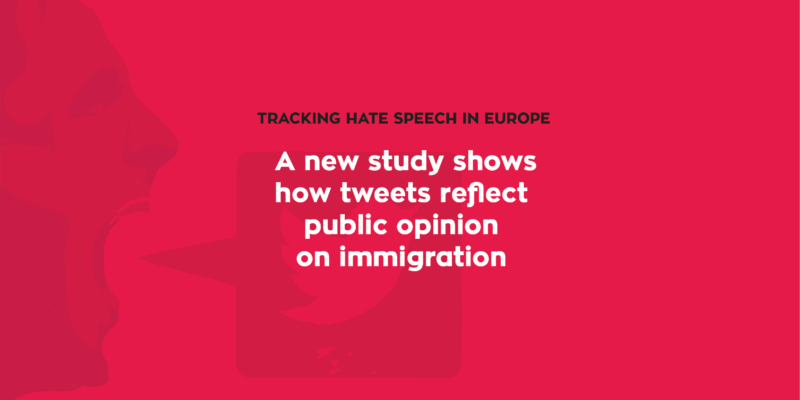1. What was the research study about?
The study was published in the academic journal Comunicar (vol. XXX, No. 71, 2 April 2022) one of the most relevant and prestigious publications in the fields of Communication and Education. This study was produced within the framework of two EU-funded projects: HumMingBird and PHARM. The study focused on the occurrence of hate speech on social media as a way to predict the social acceptance of migrants and refugees in European countries. We measured in what region there is more hate, in which one social acceptance is greater, and we also studied the proportion of immigration in each, to study whether that plays a role in influencing the other two factors. A greater presence of immigration was found to positively correlate with greater social acceptance, and social acceptance was found to negatively correlate with the presence of hate speech.
2. How did you come up with the idea of tracking tweets on Twitter to analyse hate speech towards migrants?
Even though it is not the most used platform, Twitter has been commonly studied because of its relevance in the formation of public opinion. We have been studying hate speech on Twitter for some time, and one of the main conclusions of our work is that studying hate speech on a social network such as Twitter could help predict social acceptance toward migrants and refugees.
3. How does the monitoring procedure work?
We originally developed and trained an automatic detector for hate speech against migrants and refugees in Spanish, and then improved it and trained it to function also in Italian and Greek. Then, we downloaded more than 850.000 geolocated tweets – this was important, as we wanted to have measures in the different regions (level NUTS 2) – from European countries and used automatic translation to run them through our detector. This detector was trained using shallow and deep learning techniques, offering satisfactory results.
4. What was the most interesting aspect of the results?
The most interesting aspect was the capacity of hate speech monitoring on Twitter to predict social acceptance toward migrants and refugees. It was something that would allow a faster and constant measure of social acceptance because otherwise, this would need to be measured with large-scale surveys that usually take longer and are more expensive. This has practical implications, as it could allow different private and public institutions more constant and cheaper monitoring of social acceptance –future studies could follow similar lines with other objects of study, such as attitudes toward other minorities, for instance–. Beyond that, we achieved one of the most complete pictures of the levels of hate speech in Europe between 2015 and 2020. The aforementioned use of geolocated tweets was also relevant, due to the small proportion of geolocation, which has avoided previous studies and has demanded a great effort in order to achieve such a big sample.
5. What are the countries in which hate speech levels are higher?
Italy and Greece have shown generally high comparative levels of hate speech between 2015 and 2020, just like some Eastern countries, such as Hungary. The Italian and Greek case could be partly explained by the fact that the detector was trained initially in those languages – and thus it may have been slightly more effective in picking up hate speech in those languages.
6. Do you have any suggestions for confronting racism and hate speech on social media?
It is always a difficult issue because most measures adopted could clash with freedom of speech, which is always problematic. Constant monitoring and analysis, like was conducted in this and other studies, is essential, because the more we know about the phenomenon, the easier it is to tackle it. Some complementary ideas could be in the areas of education, media literacy, or the improvement of attitudes toward migrants and refugees (and any other minorities).
This research study was produced within Humming Bird. Humming Bird is a Horizon 2020 research that aims to improve the mapping and understanding of changing migration flows.









